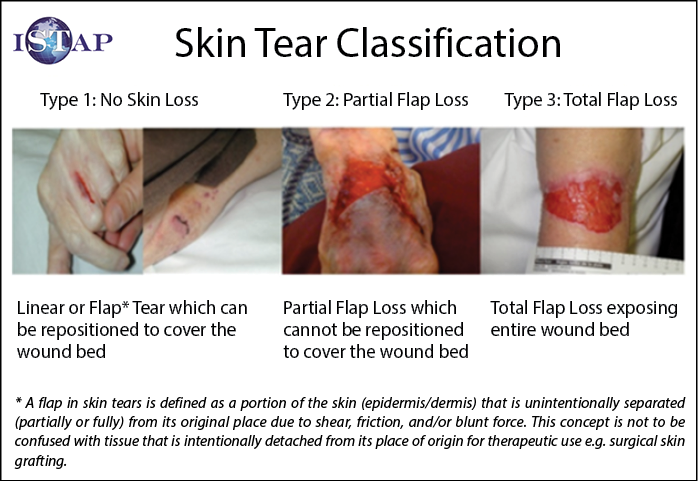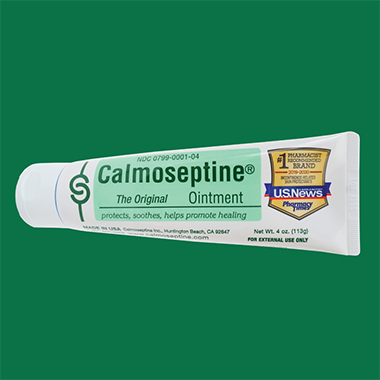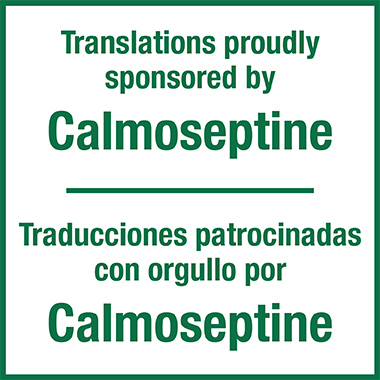Volume 43 Number 3
Around the WCET® world
Samantha Holloway
For referencing World Council of Enterostomal Therapists®. Around the WCET® world. WCET® Journal 2023;43(3):10.
Embedding the International Skin Tear Advisory Panel’s Skin Tear Classification into practice
The International Skin Tear Advisory Panel (ISTAP) developed a classification system for skin tears in 20111. Following this a study was undertaken to establish the validity of the system in clinical practice2. This study showed that the ISTAP classification was easy to use for practitioners in different clinical settings and also in different countries. Subsequently a larger validation study was carried out in 2019 across 44 countries and involving 1601 participants3. The conclusion of this research was that the classification system is supported by evidence for validity and reliability, with the recommendation that this should be the system of choice for the systematic assessment and reporting of skin tears in clinical practice and research globally.
The ISTAP Skin Tear Classification System categorises skin tears into Types, with Type 1 being a linear or flap skin tear with no tissue loss, Type 2 involves partial flap loss (where the flap cannot be repositioned to cover the wound bed) and Type 3 indicates complete flap loss (Figure 1).

Figure 1 ISTAP Skin Tear Classification System
The first aid measures to follow when a skin tear does occur is to, first, stop the bleeding and then, gently cleanse the wound to remove any debris. If a skin flap is present this should be reapproximated to cover the wound bed and then the skin tear should be classified using the ISTAP Skin Tear Classification System4.
The classification system is now available in 14 other languages other than English, being Arabic, Czech, Dutch, French, Hebrew, Japanese, Spanish, Chinese, Danish, German, Italian, Portuguese, Swedish and Turkish (skintears.org). ISTAP has had the pleasure of supporting and working with colleagues in these countries to aid in the translation process and advise on implementation.
The next steps in developing the ISTAP classification system is to ensure it is validated in different populations with different skin tones as we recognise that the current system reflects how skin tears appear in predominantly white Caucasian skin. This is where ISTAP needs your help! We would welcome opportunities to collaborate with colleagues to create a repository of images of skin tears in different skin tones. We would also encourage anyone seeking to validate the ISTAP classification in different populations, particularly in groups with different skin tones, to contact us (info@skintears.org) for support with this.
Alrededor del mundo WCET®
Samantha Holloway
Incorporación a la práctica de la Clasificación Internacional del Desgarro Cutáneo de la Comisión Asesora Internacional sobre el Desgarro Cutáneo
La Comisión Asesora Internacional sobre el Desgarro Cutáneo (ISTAP) desarrolló un sistema de clasificación de los desgarros cutáneos en 20111. A continuación, se realizó un estudio para determinar la validez del sistema en la práctica clínica2. Este estudio demostró que la clasificación ISTAP era fácil de utilizar para los profesionales en diferentes entornos clínicos y también en diferentes países. Posteriormente, en 2019, se llevó a cabo un estudio de validación más amplio en 44 países y con 1601 participantes3. La conclusión de esta investigación fue que el sistema de clasificación está respaldado por pruebas de validez y fiabilidad, con la recomendación de que debería ser el sistema de elección para la evaluación sistemática y la notificación de los desgarros cutáneos en la práctica clínica y la investigación a nivel mundial.
El sistema de clasificación de desgarros cutáneos de la ISTAP clasifica los desgarros cutáneos en tipos: el tipo 1 es un desgarro cutáneo lineal o en colgajo sin pérdida de tejido, el tipo 2 implica una pérdida parcial del colgajo (cuando el colgajo no puede recolocarse para cubrir el lecho de la herida) y el tipo 3 indica una pérdida completa del colgajo (Figura 1).

Figura 1 Sistema de clasificación de desgarros cutáneos ISTAP
Las medidas de primeros auxilios que deben seguirse cuando se produce un desgarro cutáneo son, en primer lugar, detener la hemorragia y, a continuación, limpiar suavemente la herida para eliminar cualquier resto. Si existe un colgajo cutáneo, éste debe reaproximarse para cubrir el lecho de la herida y, a continuación, el desgarro cutáneo debe clasificarse mediante el sistema de clasificación de desgarros cutáneos ISTAP4.
El sistema de clasificación ya está disponible en otros 14 idiomas además del inglés: alemán, árabe, checo, español, francés, hebreo, japonés, chino, danés, italiano, neerlandés, portugués, sueco y turco (skintears.org). ISTAP ha tenido el placer de apoyar y trabajar con colegas de estos países para ayudar en el proceso de traducción y asesorar sobre la aplicación.
Los próximos pasos en el desarrollo del sistema de clasificación ISTAP son garantizar que se valide en diferentes poblaciones con distintos tonos de piel, ya que reconocemos que el sistema actual refleja cómo aparecen los desgarros cutáneos en la piel predominantemente blanca caucásica. Aquí es donde ISTAP necesita su ayuda Nos gustaría tener la oportunidad de colaborar con otros colegas para crear un repositorio de imágenes de desgarros cutáneos en diferentes tonos de piel. También animamos a cualquier persona que desee validar la clasificación ISTAP en diferentes poblaciones, especialmente en grupos con diferentes tonos de piel, a que se ponga en contacto con nosotros (info@skintears.org) para que le ayudemos.
Author(s)
Samantha Holloway
ISTAP President
References
- LeBlanc K, et al. (2011) Skin Tears – State of the Science: Consensus Statements for the Prevention, Prediction, Assessment, and Treatment of Skin Tears Advances in Skin & Wound Care. 24(9): 2-15.
- LeBlanc K, Baranoski S, Holloway S, Langemo D. Validation of a new classification system for skin tears. Adv Skin Wound Care. 2013 Jun;26(6):263-5. doi: 10.1097/01.ASW.0000430393.04763.c7. PMID: 23685526.
- Van Tiggelen H. et al. (2019), Standardizing the classification of skin tears: validity and reliability testing of the International Skin Tear Advisory Panel Classification System in 44 countries. Br J Dermatol. doi:10.1111/bjd.18604
- Holloway S & LeBlanc K. Reapproximating a Skin Tear Flap. Advances in Skin & Wound Care 35(8):p 462-463, August 2022. | DOI: 10.1097/01.ASW.0000835124.90642.ce



